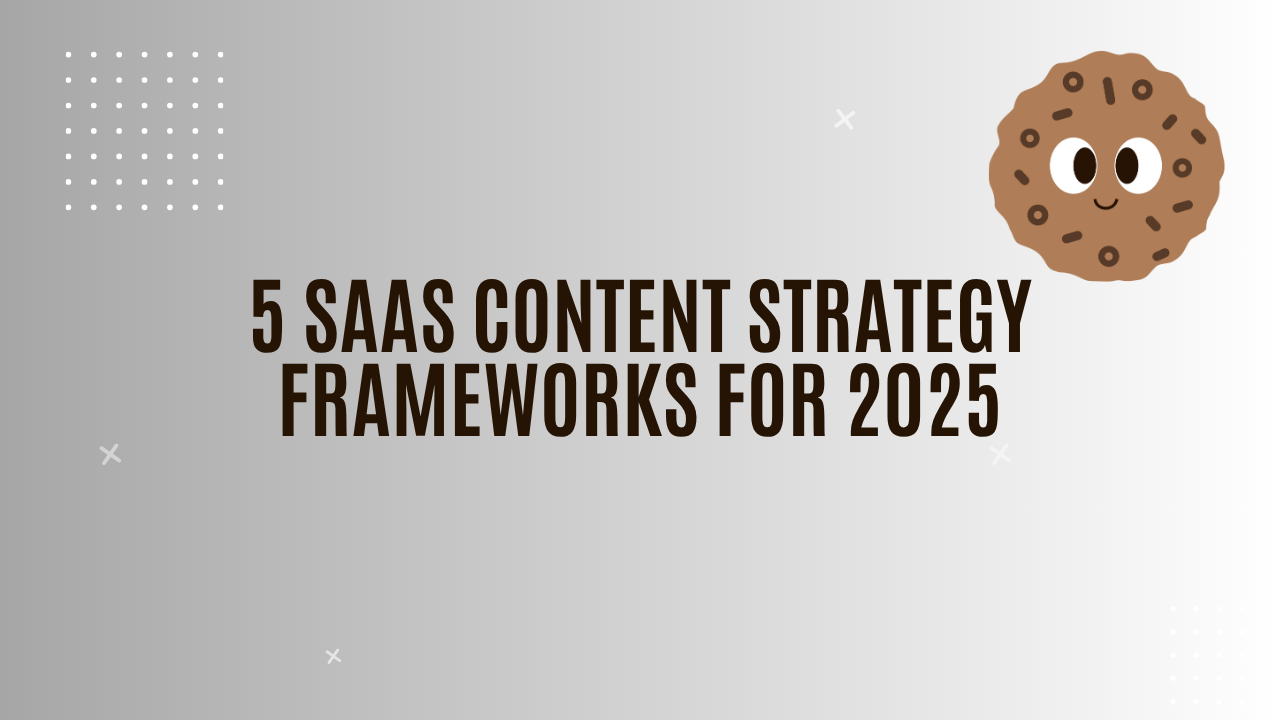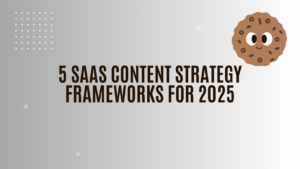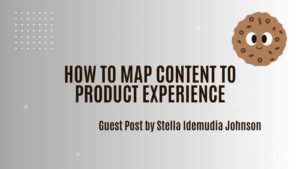Creating content is easy.
Creating content that actually works? That’s where most SaaS businesses get stuck.
A SaaS content strategy framework gives your content purpose. It ensures every piece aligns with your goals and delivers value.
In this blog, we’ll dive into frameworks that can help you create smarter, more effective content in 2025, along with how to choose the right one. ✅
🧠 Fun Fact: The term ‘content marketing’ first appeared in 1996, but it wasn’t until the early 2000s that it gained significant traction in the digital marketing world, particularly within the SaaS sector.
Why Frameworks Are Essential for SaaS Content Strategies
Frameworks bring structure to your SaaS content strategy. They make planning easier, ensure everyone on your team works toward the same goals, and maintain consistency in your content.
A clear framework saves time and helps you focus on creating content that resonates with your audience and drives meaningful results.
🔍 Did You Know? Businesses that use a content marketing strategy experience 30% faster growth than those that don’t incorporate content into their marketing efforts.
Key SaaS Content Strategy Frameworks to Explore
Choosing the right SaaS content strategy framework can simplify your content planning process and help you create content that delivers results.
Below, we’ll break down five proven frameworks and how they can work for your SaaS business, complete with practical examples for each.
Framework #1: The buyer’s journey framework
The buyer’s journey framework organizes content around the three key stages your audience goes through: awareness, consideration, and decision. Each stage focuses on answering specific questions and guiding potential customers closer to choosing your product.
- Awareness: Create content that educates and raises awareness about a problem or need. For example, write a blog post titled ‘Top 5 Challenges SaaS Teams Face With Project Management’ to attract readers at the start of their journey
- Consideration: Develop resources that explore solutions. A whitepaper comparing various SaaS tools or a video highlighting common solutions works well here
- Decision: Offer content that builds trust and encourages action, such as case studies or free trial offers. A case study showing how your software helped a client reduce onboarding time would resonate
Aligning content with these stages ensures you meet your audience where they are and move them toward a decision.
🧠 Fun Fact: Nearly half of content marketers believe case studies have the most substantial impact on driving sales, underscoring the importance of showcasing real customer experiences.
Framework #2: The pillar-cluster model
The pillar-cluster model structures content around a central topic, with supporting pieces linking back to it. This framework strengthens SEO by showing search engines the depth and breadth of your expertise.
Here’s a better look:
- Pillar content: A comprehensive guide, like ‘The Ultimate Guide to SaaS Content Strategies,’ serves as the foundation. It covers the topic broadly and links to detailed subtopics
- Cluster content: These are the supporting pieces, such as blogs about SaaS content goals, SEO strategies, or buyer personas
For example, a SaaS business offering CRM software could create a pillar page about CRM benefits with clusters like ‘How to Choose the Best CRM for Startups’ or ‘5 CRM Features Every Sales Team Needs.’
🔍 Did You Know? 84% of B2B marketers agree that content marketing has been a key factor in boosting brand awareness over the past year.
Framework #3: The 70-20-10 rule
This framework focuses on content diversity and helps balance your strategy between tried-and-true formats and experimental approaches. Here’s how it works:
- 70%: Core content that your audience already values, like blogs or tutorials on SaaS best practices
- 20%: Slightly innovative content, like interviews with industry leaders or interactive infographics
- 10%: Riskier experiments, like launching a TikTok campaign or trying a humorous take on your brand messaging
For example, if you run a SaaS project management tool, your 70% might include step-by-step how-to blogs.
Your 20% could focus on a video series featuring top productivity hacks, and the 10% might explore creative short-form content showcasing real-world user challenges.
This framework keeps your content strategy fresh without straying too far from what works.
🔍 Did You Know? Content marketing is seen as the top revenue-driving channel by 49% of US B2B marketers, demonstrating its significant impact on sales generation.
Framework #4: Problem-solution framework
This straightforward framework addresses pain points your audience faces and positions your SaaS product as the solution. Each piece of content highlights a specific challenge and explains how to solve it.
See how:
- Problem: Outline the issue clearly. For instance, ‘Why Teams Struggle With Remote Collaboration’
- Solution: Present actionable advice and showcase your product’s role. A guide like ‘How to Use Our Tool to Improve Team Communication’ can help
Let’s say a SaaS platform offering HR software focuses on a common problem, such as employee retention.
A blog titled ‘The Hidden Cost of High Turnover’ could outline the issue, while a follow-up piece could highlight how the platform simplifies onboarding and tracks performance.
This framework helps you connect with your audience by addressing their challenges head-on.
Framework #5: The hub-and-spoke model
Similar to the pillar-cluster model, the hub-and-spoke model revolves around a central theme. However, instead of linking smaller blogs to a large guide, it connects various formats, such as videos, podcasts, and case studies, around a central hub.
Let’s break it down:
- Hub: Create a landing page on a key topic, such as ‘Everything You Need to Know About SaaS Onboarding’
- Spokes: Add diverse content pieces that support the hub, like how-to guides, video tutorials, and expert interviews
A SaaS business focused on marketing automation might create a hub page for email marketing. The supporting spokes could include a video tutorial on setting up drip campaigns, a checklist for email design, and a webinar on personalization.
🔍 Did You Know? The top three types of content for SaaS marketing include ebooks (88%), comparison pages or ‘alternatives to’ posts (72%), and roundup articles (66%), all of which help in educating and guiding prospects effectively.
How to Choose the Right Framework for Your SaaS Business
Choosing the right framework starts with clarity on three key factors: goals, audience, and resources.
First, define your goals—are you focused on building brand awareness, nurturing leads, or driving conversions? Different frameworks work best for different outcomes, so knowing your priorities is essential.
Next, understand your audience.
What are their challenges, preferences, and content consumption habits? For instance, if they prefer in-depth resources, the pillar-cluster model might be ideal. If they need actionable advice, the problem-solution framework could work better.
Finally, assess your resources, including your team’s expertise, budget, and time availability.
Some frameworks, such as the hub-and-spoke model, require significant effort, while others, like the 70-20-10 rule, allow for greater flexibility.
🔔 Reminder: Frameworks aren’t rigid. You can combine or customize them to suit your business needs. The goal is to choose an approach that aligns with your capabilities while delivering value to your audience.
Ready to Take Action? 💪
Choosing the right framework can elevate your SaaS content strategy and help you hit your business goals.
At 31Cookies, we specialize in crafting tailored content strategies that drive results for SaaS businesses. Let us take the reins on your content so you can put your energy where it counts most.








